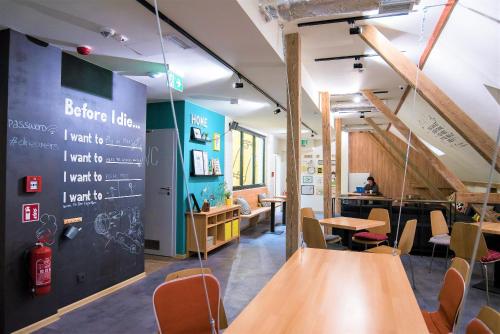Historic Centre of Warsaw, Poland
It was spite that destroyed it and pride that restored it.
Like a lesson in humanity, it was the stronger and purer emotion that came to define the legacy of Warsaw’s Old Town.
Looking at the historic centre of the Polish capital city today, it’s actually hard to believe that this vast area with thousands of beautiful buildings is decades, rather than centuries, old.
But everything you see here has been meticulously restored to look exactly how it did before evil struck.
The destruction of Warsaw
To understand the story of Warsaw’s Old Town, we need to go back to the Second World War.
Before hostilities broke out, the Old Town was a marvellous collection of buildings that told the story of the city’s history.
There were the intricately decorated facades of the Guild Hall and the Town Hall; the colossal Castle Square; and the splashes of Gothic, Renaissance, and Baroque architecture spread out between them.
But Warsaw was caught right in the middle of WWII’s destructive path. The Old Town was badly damaged early on, with bombing during the German invasion of Poland in 1939. But the residents stayed on and buildings were patched up.
It was five years later that the real blow was to land.
In August of 1944, the Polish resistance took up the fight against the Nazi occupiers in what became known as the Warsaw Uprising. The resistance inflicted serious damage on the Germans and killed thousands of them.
The Nazis weren’t happy and they wanted revenge. To punish the Poles, they decided to destroy Warsaw. In a deliberate and coordinated operation, they went through the Old Town, stealing anything of value, burning buildings with flamethrowers, exploding monuments.
Of course, lots of cities were damaged or destroyed during World War II but that was because of attacks. This was different.
The Germans brought in engineers who specialised in demolition and they went through the streets systematically destroying buildings for months. In the end, the losses were estimated to be about 10,000 buildings, 25 churches, 14 libraries, 150 schools, and 2 universities.
The reconstruction of Warsaw
When the Second World War came to an end, the people of Warsaw (and Poland more generally) were faced with a decision. What to do about the Old Town?
It seems that there wasn’t too much debate. It needed to be rebuilt.
It wasn’t just about the physical city that had been destroyed – it was also about what it represented. The Nazis, by razing Warsaw to the ground, had been trying to wipe out Polish culture and history, to make their identity cease to exist.
If the Poles didn’t rebuild, then the Nazis would win. This was a matter of pride – on behalf of centuries of Polish heritage.
But what happened next was quite incredible. The city was gradually built almost identically to how it had been previously.
It took about five years to do the first stage. They used old photos and paintings, historical records, people’s memories. The aim was not just to put buildings back in the right place, but to also give them the same artistic designs and colours.
One of the greatest resources in the whole process was a collection of paintings by an Italian artist called Bernardo Bellotto (also known as Canaletto). He was the court painter to the King of Poland in the late 18th century and he did a series of works that captured the streets and squares of the Warsaw Old Town perfectly and in great details.
Although obviously it was architects and engineers who did the heavy lifting, the reconstruction of Warsaw was an effort by the whole city. Ordinary citizens helped clean away the rubble and they gave their leaders the public support they needed.
It was a matter of pride to decide to rebuild and it was an even greater sense of pride that the whole city and country did this together.
After the first five year period of reconstruction was done, the work continued. There were more projects that continued until the 1960s. And when the Warsaw Castle was finished in 1984, the whole reconstruction of the Old Town was complete.
You’ll get a lot more out of a visit to Warsaw’s Old Town with a local guide. I’ve got some suggestions here for different tours that you may like:
Visiting Warsaw Old Town
Visiting today feels slightly strange. I’ve been to a lot of historic centres around Europe and, on first glance, this one looks no different.
It has everything where you would expect to have it, and all the styles from the various centuries are represented, as is usually the case with a historic centre that has evolved over a long period of time.
However, when you know the real history of Warsaw’s Old Town and you start to look closely, you can see that everything is a little cleaner than usual, a little less rundown than you might expect.
I don’t think you can come here and assess the Old Town of Warsaw in the same way you would assess other historic centres. That’s not what makes it so special.
The reason this place is so significant is precisely because it isn’t old. It’s because it’s new… or, more precisely, it’s because of why it’s new.
Walking through the streets and alleys and seeing everything so perfectly restored is a symbol for many things, depending on how you want to look at it.
It’s certainly a symbol of national pride, a heartwarming representation of what love for a city can do.
It’s also a symbol of how the culture of the country is not defined by the material – that just because buildings are destroyed doesn’t mean your heritage is too.
And, for me, the strongest symbol is that evil will always be conquered. Light will always shine through the darkness and even after years of horrors here in Warsaw, the city has come through it stronger than ever.
THE BEST ACCOMMODATION IN WARSAW
There are some gorgeous apartments in the Old Town, but you’ll get more variety and value in surrounding neighbourhoods.
BACKPACKER

Right in the Old Town, Safestay Warsaw is spread over four levels with privacy bunks, a kitchen, and fun common areas.
BUDGET

Although you can find cheaper, I think Motel One Warsaw-Chopin offers great value with comfortable rooms and an elegant design.
BOUTIQUE

Stylish and colourful, Hotel Indigo Warsaw Nowy Świat has fantastic service and a convenient location.
LUXURY

Operating since 1857, there’s a historic opulence to Raffles Europejski Warsaw, although there are also plenty of modern touches.
Beautiful pictures, as always. Warsaw is not the only European place to have been reconstructed after WWII. The old town of Nuremberg in Germany is another great example, although it looks like Warsaw managed to close more gaps, and I love the colours of the houses. I feel really inspired now to visit, luckily it’s not too far from Berlin!
Warsaw is beautiful and when I visit it is hard to believe that most of the city is rebuilt. Berlin, another beautiful city, was destroyed as was Dresden.. . You would think we would learn from previous wars but haven’t and never will.
i visted warsaw in 2019 the home of my father what a beautiful city. i met my 2 cousins for the first time. what a wonderful time in my life
Somehow walking thru the old town of Warsaw i still get the feeling there could be more re-built. As if something is still missing. Don´t get me wrong i love the place. But something missing